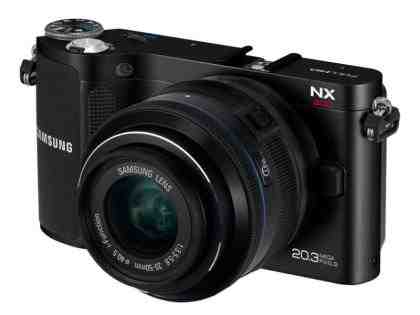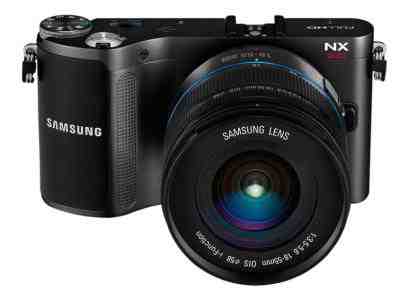Compact system cameras (CSCs) are big news at the moment, and the NX system is Samsung's competitor to the likes of Sony's NEX or Olympus and Panasonic's Micro Four Thirds. The NX200 marks a significant advance for the NX system, with a brand new 20-megapixel sensor, 7fps continuous shooting, 1080p videos and a sleek design that strikes an excellent balance of form and function.

One of our biggest concerns with the Samsung NX100 was the lack of an integrated flash. For the NX200, Samsung has (like Sony and Olympus) included a small detachable flash unit in the box. It's not quite as elegant as an integral pop-up flash, but it's handy to able to take it or leave it depending on where you're going that day. It sits in a standard hotshoe, and Samsung also sells various more powerful flashguns that support fully automatic exposure. The optional electronic viewfinder has been dropped from the range, though, and the NX200 doesn't support it.
Another concern with the NX100 was that its kit lens didn't offer optical stabilisation. The same lens is included in the NX200 kit we reviewed, but it's also available with an 18-55mm stabilised lens from Jessops for £600 including VAT. It's not as light or as compact as the 20-50mm lens, but its stabilisation and larger zoom range are well worth the extra £50.

The greatest asset of previous Samsung NX models has been their controls, and the NX200 is no exception. The focus ring on the lens can be reassigned to various other uses via the iFunction button on the barrel, and with a command dial and a wheel encircling the navigation pad, adjusting exposure settings is extremely quick. There are labelled buttons for exposure compensation, ISO speed, drive mode, focus mode and focus point, and a Fn button calls up a grid of other key settings on the 3in screen. A Custom button can be assigned to one-touch manual white balance calibration – an extremely useful feature that's often buried in a submenu. The menus are responsive and well laid out, and include the ability to set the auto ISO range from 100-200 to 100-3200. The Picture Wizard customisable presets offer effective control over colour and sharpness processing.
Continuous performance is dramatically improved over the NX100. It didn't quite hit the claimed 7fps speed in our tests, but 6.3fps for 11 frames is a good result. However, rather than slowing once the buffer was full, shooting stopped and the camera was inoperable for 12 seconds while these 11 photos were saved. In RAW mode, 6.3fps shooting lasted for eight frames and took 40 seconds to save. That’s disappointing but hardly surprising – raw files are extremely big at around 47MB each.
An alternative continuous mode ran at 3fps before slowing to 1fps after 12 shots for JPEGs. Yet another mode captured 30 5-megapixel shots at up to 30fps, although the screen was blank during capture. Overall, it's a flexible collection of burst modes, but we'd have liked a little more buffer memory and a faster processor to save those enormous 20-megapixel photos. General shot-to-shot performance was on the slow side for a CSC, averaging 1.4 seconds, but we're pleased to report that autofocus speed was up to scratch.
